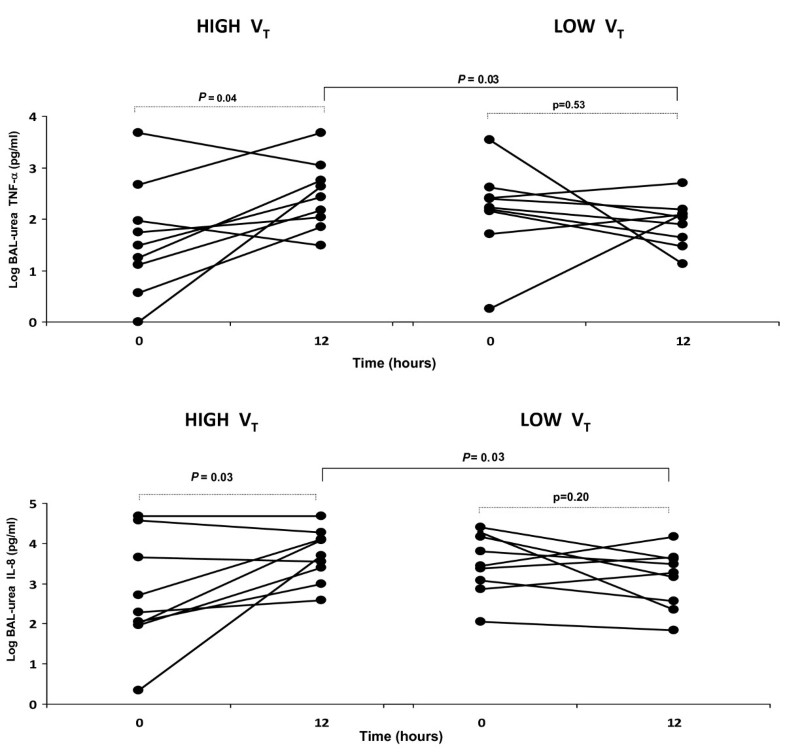

Once the pressure support is increased, the patient can be observed for improvements in their work of breathing, a slowing of their respiratory rate or an increase in their tidal volumes. Please refer to physician specific directives for your specific patient populations. There may be specific cases where patients are allowed to maintain high respiratory rates. It is important to remember that some patient populations have higher respiratory rates that fall higher than textbook normals. If there is an increase by 20% from the initial baseline when the change is made, this may indicate the patient is not tolerating the change. Additional indicators that the patient may require more support from the ventilator are the heart rate and blood pressure. If they are a lot lower than the normal tidal volumes (6-8 ml/kg) for their ideal body weight (as discussed in Chapter 5), this also is indicative of needing additional support. In addition, look at the tidal volumes the patient is getting. They may benefit from increasing the set pressure support. If the respiratory rate climbs outside the physiologic averages (12-25 bpm), this may be indicative of a patient not tolerating the support level given. These effects can be seen quite soon after any changes are made. As patients are tiring out or experiencing increased WOB, their respiratory rates normally increase and their tidal volumes may be insufficient for their physiologic needs. Since PSV is meant to allow the patient to initiate their own breaths at their own speed, monitoring how they are breathing is the first step in monitoring tolerance. This low limit is often termed “minimal settings” and therefore, we do not go below PS 5 cmH 20 unless instructed by a physician. The added pressure support of 5 cmH 20 gives a little “push” to the air to help get the air in quicker and negate the added difficulty the endotracheal tube adds. It might become difficult after a while to get the air in fast enough to fill your lungs adequately. Imagine trying to breathe for longer than a couple minutes-in and out-through a straw. Being intubated is akin to “breathing through a straw”.


 0 kommentar(er)
0 kommentar(er)
